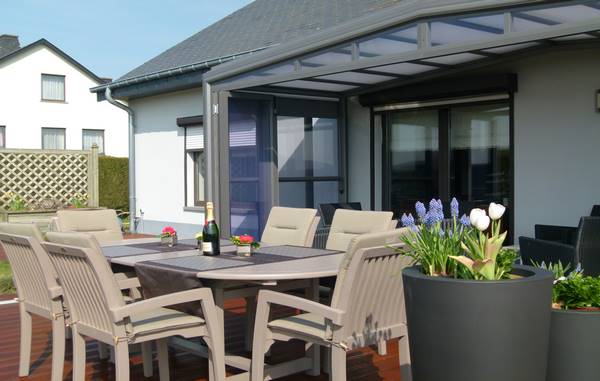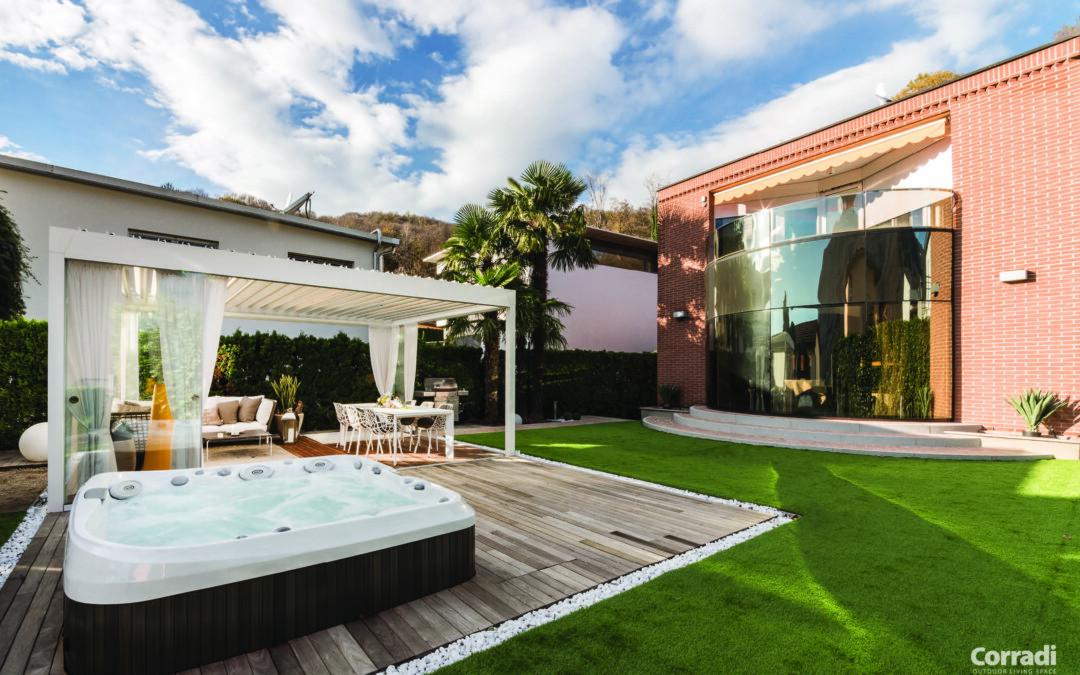Are you planning to build a terrace to enjoy the sun and breeze during the summer months? However, by converting it into a veranda, you can enjoy it all year round. The roof protects your terrace from the elements. Not only will you continue to enjoy your outdoor living room in winter, but it will also bring style to your home.
Why cover your terrace?
Firstly, by covering your terrace, you can enjoy this outdoor space for a longer period of the year, whatever the weather. So you can extend your summer evenings or enjoy your terrace even when it’s raining or snowing.
What’s more, a covered terrace adds value to your home, as it becomes a true extension of your living space and can therefore increase your living area. You can therefore consider this installation as a real investment.
It can also beautify your property, offering an elegant, modern look that enhances your home and the surrounding landscape.
Covering your terrace, especially with a veranda or pergola , can add functionality to your outdoor space. For example, a kitchenette, a reading corner or a Jacuzzi.

What are the differences between pergolas, terraces and verandas?
Terraces, pergolas and verandas are among the most popular home furnishings. Yet each extension has its own distinctive features.
The terrace
In most cases, this consists of a concrete slab laid on a plot of land, to which wood or composite slats, tiles or stone are added. You can build a covered terrace as an extension, so you can enjoy your garden all the time.
If your terrace doesn’t have a shelter, you can shade it with a parasol, awning, stretched canvas, arbour or canopy. These will also add a decorative touch.

The pergola
A pergola is a wooden or aluminum structure with a roof. It protects you from the vagaries of the weather and the sun’s rays as you lounge in your garden furniture on your terrace. It also adds a certain style to the exterior of your home.
Its advantages are numerous: you can add it to your home as an extension, or set it up in the middle of the garden. The roof can be :
- fixed in laminated glass or translucent alveolar polycarbonate
- bioclimatic, i.e. it’s made up of slats that you adjust by remote control to regulate ventilation and sun intensity.
The veranda
The veranda is a real living space. The design is modern and stylish. The glass veranda is distinguished by its high level of luminosity. It can be made of aluminum, wood or PVC. Its walls are fitted with double or triple glazing to prevent heat loss .
There are two types of veranda: traditional and retractable.
The traditional veranda
This classic patio cover is built on an insulated concrete slab. It offers several benefits. You can keep it busy all year round. You can heat the veranda in several ways: with a stove, with underfloor heating or by installing radiators. It is covered by an insulated roof. It can also be double- or triple-glazed to let the sunlight flood into your home.
However, these verandas have several disadvantages: they take a long time to build and cost more.

The retractable veranda
It’s a good compromise between a traditional veranda and a pergola. In fact, this retractable patio enclosure is a real living space that you can enjoy in any season. You can open the roof and walls as you like when the weather’s fine, and close them when the showers arrive.
Verandas can be designed to suit individual tastes: create a living room, dining room, outdoor kitchen, winter garden, etc. Blinds or curtains can be deployed on the walls to add a modern touch to the decor.
Transform your terrace into a modern veranda
You can make your project a reality by installing a retractable veranda. It’s a place that can be adapted to suit the mood of the moment. Your terrace is back to its original function in summer, with evenings under the stars and the inevitable barbecues. In the off-season, you can continue to enjoy the terrace, spending days and evenings there without the cold bothering you. You’ll also feel safe and secure. The roof is sturdy and can withstand the weight of snow, making it very reliable.
Our tips for decorating and fitting out your veranda
The veranda is therefore an extension of the house, creating an additional living space while enjoying the light and views outside. Here are a few decorating and furnishing tips to make it a comfortable room:
- Choice of materials that blend harmoniously with the architecture of the house. If the house is made of wood, for example, it may be wise to opt for an aluminum veranda to add a modern touch to the whole.
- Use blinds and curtains to modulate sunlight: to enjoy natural light in a pleasant way, it’s important to be able to modulate sunlight according to the season and time of day. Blinds and curtains help regulate light and preserve privacy.
- Storage space: like any living space, the veranda needs storage space for cushions, plaids, toys and so on. Depending on the configuration of the veranda, it may be wise to install cupboards, shelves or bookcases to optimize the available space.
- Focus on versatility: to be able to use your veranda all year round, it’s important to make it multi-purpose, with different equipment to suit your needs and desires. An auxiliary heater, for example, can be used to heat the veranda in winter, while a fan or air conditioner can be useful in summer.
- Creating visual continuity between the veranda and the garden: to make the veranda an integral part of your home, it’s important to create visual continuity between it and the garden. This can be done with plants that are also present outdoors, or by using materials that blend well with those in the garden (wood, stone, etc.).
Conclusion
The retractable veranda is a practical solution for enjoying the outdoors while benefiting from extra protection against the elements. It can be customized to suit individual tastes, bringing a modern touch to the home. With a retractable veranda, you can spend quality time with family and friends.




